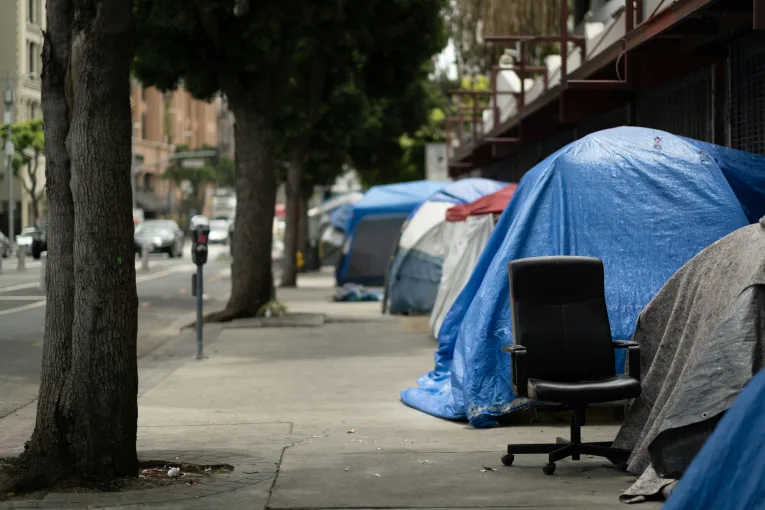
KQED in San Francisco did a great story on a young man in Oakland who was living in his vehicle. He got lucky as an outreach worker in 2022 was able to sign him up for housing—the result of rental assistance was that he was able to get into his own East Oakland apartment. But there was an interesting catch: “That rental assistance came with an expiration date, and time was up.”
So now you have a guy in an $1875 a month apartment, who only receives $1300 per month in disability benefits—the result is that he is about to have to move back into his car.
“At a moment when Gov. Gavin Newsom is demanding cities get more people off the streets,” KQED reports. The experience of this young man shows “why that can be so difficult.”
“Their experience mirrors a scathing critique from the state auditor in April, which blasted Newsom’s administration for failing to track and evaluate its efforts to address homelessness despite allocating some $24 billion between 2019 and 2023,” KQED reports. “The report found that an alarming rate of people who entered some form of housing cycled back to the streets.”
“They’re creating a revolving door,” the mother said.
Indeed, what happened here is interesting. The good news is that the young man was “able to take advantage of a “rapid rehousing” program, temporary rental assistance meant to serve as a bridge to permanent housing.”
That got him immediately off the street, but the problem is that it’s short-term help, not permanent supportive housing.
KQED notes, “According to Alameda County officials, nearly 10% of program participants returned to homelessness.”
In the scheme of things, ten percent is probably not that bad—unless of course you’re one of the ten.
KQED reports: “Rapid rehousing programs were originally created to help people get back on their feet after temporary setbacks, like a job loss. Today, in the absence of enough permanent housing, they’re often applied to people with much higher needs.”
“We’re putting very vulnerable homeless families on rapid rehousing and then expecting them to stabilize in 18 months, and in many cases, it’s not a sustainable situation,” said Mary Kate Johnson, director of regional homelessness prevention for the policy nonprofit, All Home.
This is the real problem—the need for permanent housing.
The approach of rental assistance makes some sense, given the cost of building housing—which exceeds $300,000 per unit and can cost up to $1 million. Even a long-term commitment at $1000 to $2000 per month in assistance might make more sense.
But the other problem is that the rapid rehousing program does not come with support.
There is a reason why experts say that the solution is permanent supportive housing.
As KQED notes, “Experts caution that supportive services, such as job training or substance use counseling, are essential to setting people up for success.”
Without that extra support, “it’s unlikely the subsidy alone will keep someone exiting homelessness in stable housing,” said Jovan Yglecias, chief program officer for Bay Area Community Services, a nonprofit that runs housing programs and homeless services throughout the region.
That’s a critical component.
“Because you’re not addressing any of the antecedents, you’re not addressing any of the issues, whether they’re social, economic or otherwise, that prevent that person from obtaining long-term stability,” he said.
This problem illustrates why approaches like merely clearing homeless encampments is not going to work—we lack the programs and support to actually get a lot of people off the streets on a permanent basis.
Without those back-end supports, we are simply punishing people for being poor and homeless and not giving them a way and a means to get off the streets and stay there.
The man in the story is a good example—he’s a guy who doesn’t want to be on the streets, he’s a guy who is attempting to stay off the streets, but the system has failed him.
